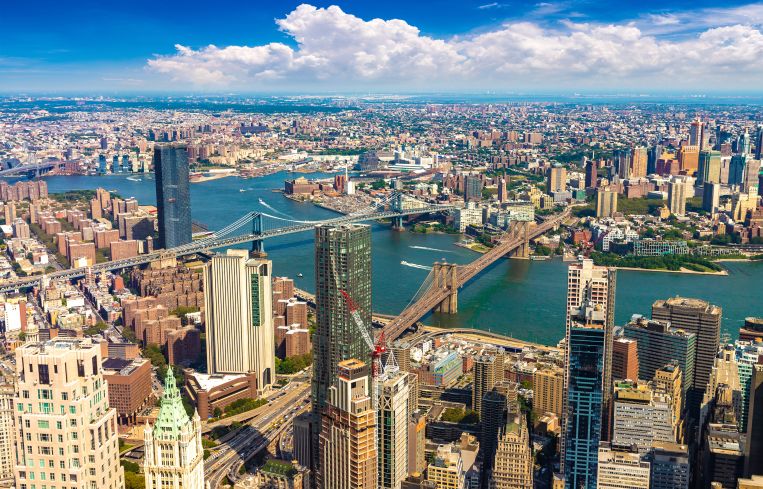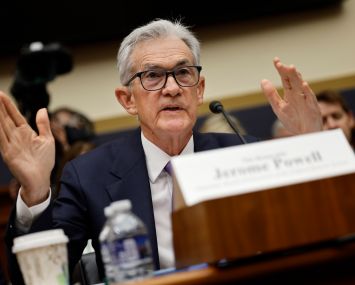Presented By: JPMorgan Chase
How Retail and Industrial May Adapt in the Coming Years
By JPMorgan Chase March 14, 2022 7:00 am
reprints
Industrial is thriving and has risen to become an especially important sector in commercial real estate. On the other hand, retail had already experienced a few challenging years before the pandemic hit, particularly Class A and B malls with large retail anchors. Partner Insights spoke to Judy Guarino, managing director for commercial mortgage lending at JPMorgan Chase (JPM), to learn more about where both sectors stand today.
Commercial Observer: Since the beginning of the pandemic, industrial has become the darling of commercial real estate. What is its current state?

Judy Guarino: Thanks to e-commerce, industrial continues to boom, as it did before the pandemic. Now it’s even more in demand since consumers fully embraced online ordering to get items delivered directly to their doorstep. The businesses without an e-commerce operation pre-pandemic certainly saw the importance of it over the last couple of years. Industrial will remain a hot asset class, especially in the Northeast among densely populated markets.
How significant is the shortage of U.S. warehouse space right now?
Space has always been an issue in New York, for every property type. In the boroughs of New York City, old stock is being renovated and developers are learning how to best utilize the space with some unique projects. There’s a bit more land for new development in northern New Jersey. It’s probably the one market where you’ll continue to see growth as it pushes its way down to the southern part of the state. There’s definitely a need for more space, and everybody is working together to figure out how to make it work.
How is everything we’re discussing affecting JPMorgan Chase’s lending in that sector?
We’re very busy. There’s a lot of activity in all the commercial mortgage lending assets, be it retail, industrial or mixed-use. Rates are low and refinancing activity has been high. We haven’t left our clients’ side. We have and will continue to lend. In fact, I have been expanding my team to help support our clients as we experience expected growth.
Brick-and-mortar retail has been in a tenuous position, with the continued rise of e-commerce and lockdowns resulting from the pandemic. What is the current state of brick-and-mortar retail?
We focus mostly on neighborhood retail. There’s always going to be a need for retail, though the type will likely change with the environment. For example, we don’t see as many shoe and clothing stores as we did in the past. But we continue to see strength in service businesses: hair and nail salons, various food takeout, etc. Twenty years ago we saw more video rental stores, local pharmacies, photo printing shops and delis. Now, we see so many more variations of food establishments and businesses that focus on health and wellness and personal improvement, because that’s what people are looking for. A lot of medical has come to retail. It used to be that only retailers needed street visibility. Now, doctors, dentists and other health professionals are forming medical groups where visibility is important. We see a lot less vacancy in neighborhood retail now compared to the beginning of the pandemic. Where we continue to see stress on retail is in areas that are dominated by office, like Midtown Manhattan, or tourist spots like Times Square. When we all get back to the office and tourism continues to improve, those retailers will come back, and new business will fill vacancies.
How do you think industrial will fare five years down the line?
I think it will still be very strong. It might start to look a little different. We’re going to see a lot of new industrial facilities being built, some of them with showrooms. Some will be multi-tenant and multi-story, allowing truck delivery on multiple levels. We’re going to see industrial properties with mother’s rooms, employee gyms, complimentary snacks and other amenities that were typically available only in office space. This notion of keeping the front office and manufacturing together in one facility is on the rise.
Is there anything else you wanted to touch on as far as interest rates?
One important thing to note: There was a time when interest rates were at 9 or 10 percent. Everyone became so used to seeing low 3s or high 2s, but current rates are not terrible. It marks a slow rise. Some people forget history, when rates were 10 to 16 percent in the late 1970s through early 1980s, or the 1990s and early 2000s when rates were 9 to 10 percent. In the current low-rate environment, investors continue to take advantage.


